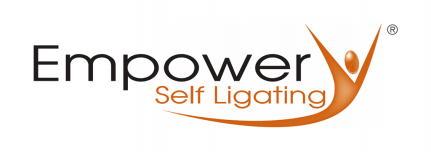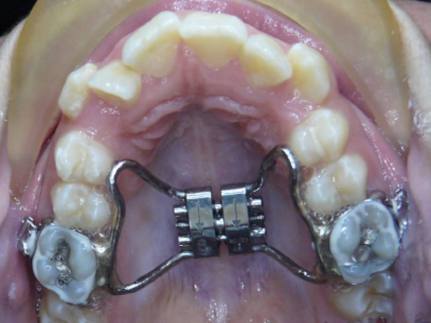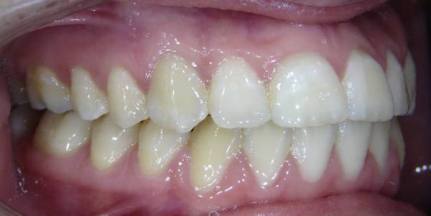- Braces
- Lower Lingual Arch – care instructions
- Space Maintenance using the Lower Lingual Arch
- Nance Holding Arch – care instructions
- Space Maintenance using the Nance Holding Arch
- Palatal Expander – RPE instructions
- Transpalatal Bar – care instructions
- Retainers
Braces
by “American Orthodontics”, a company that prides itself in selling
only “Made in the U.S.A.” products.
metal brackets. Dr. Griffies only uses metal on the bottom teeth
because ceramic brackets have the potential to cause wear to the
top teeth if they rub together.
a “self-ligating” bracket for your orthodontic treatment.
Lower Lingual Arch
patients without all of their permanent teeth and an “anchorage”
appliance in patients with full braces.
of the upper and lower front teeth.
the arch and require removal.
(we want them to stay just like this). In order to obtain a good bite
the lower front teeth need to be moved back under the upper front
teeth. With removal of one tooth on either side the canine teeth
will be moved into the place of the first premolar and the lower
front teeth brought back.
Arch to anchor as anchorage.
Space Maintenance using the Lower Lingual Arch
the eruption of the two permanent premolars. The lower left back
molar will have a tendency to move forward and block the eruption
of the premolars. The Lingual arch will maintain the space and
prevent movement of the molar forward.
have erupted into place and the lingual arch removed.
Nance Holding Arch
young patients without all of their permanent teeth and an
“anchorage” appliance in patients with full braces.
premolar is removed and the canine brought back into position.
of the tooth. The blue on the back molars is the “bite plate” which
helps prevent the top teeth from hitting the bottom brackets and
also opens the bite slightly to allow easier movement of the canine
tooth.
canine back.
proper position.
Space Maintenance using the Nance Holding Arch
awaiting the eruption of the two permanent premolars. The upper
right back molar will have a tendency to move forward and block
the eruption of the premolars. The Nance Holding arch will maintain
the space and prevent movement of the molar forward.

Approximately 5 months later the two permanent premolars and the upper left premolar have erupted into place.
Palatal Expander
to correct cross bites and expand a narrow jaw to the correct width.
“key” to turn the middle jackscrew of the expander.
lower teeth. This is called a posterior cross bite.
and right cross bite.
Transpalatal Bar
the molars in place while the remaining teeth are moved with braces.
The transpalatal bar can also be used to move the molars either
to expand or turn.
and overexpansion of the back teeth.
the overexpansion of the back teeth.
Retainers
maintains their position.
maintains their position. Dr. Griffies recommends maintaining
both the upper and lower retainers for a minimal of one year.
They however can be maintained for longer periods to insure
retention of the correction.
and then weekly there after. Unfortunately teeth will continue
to shift as we age and the best way to prevent movement is to use
a retainer periodically to insure shifting is kept to a minimum.

































